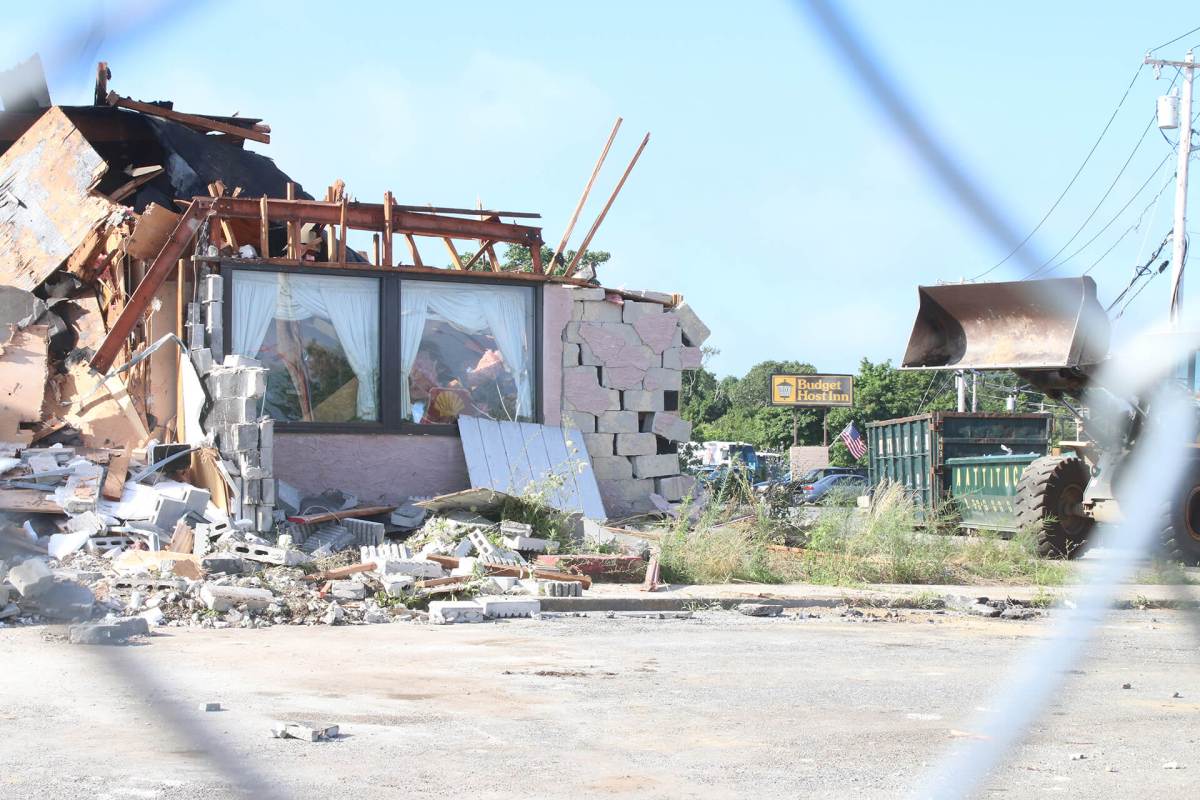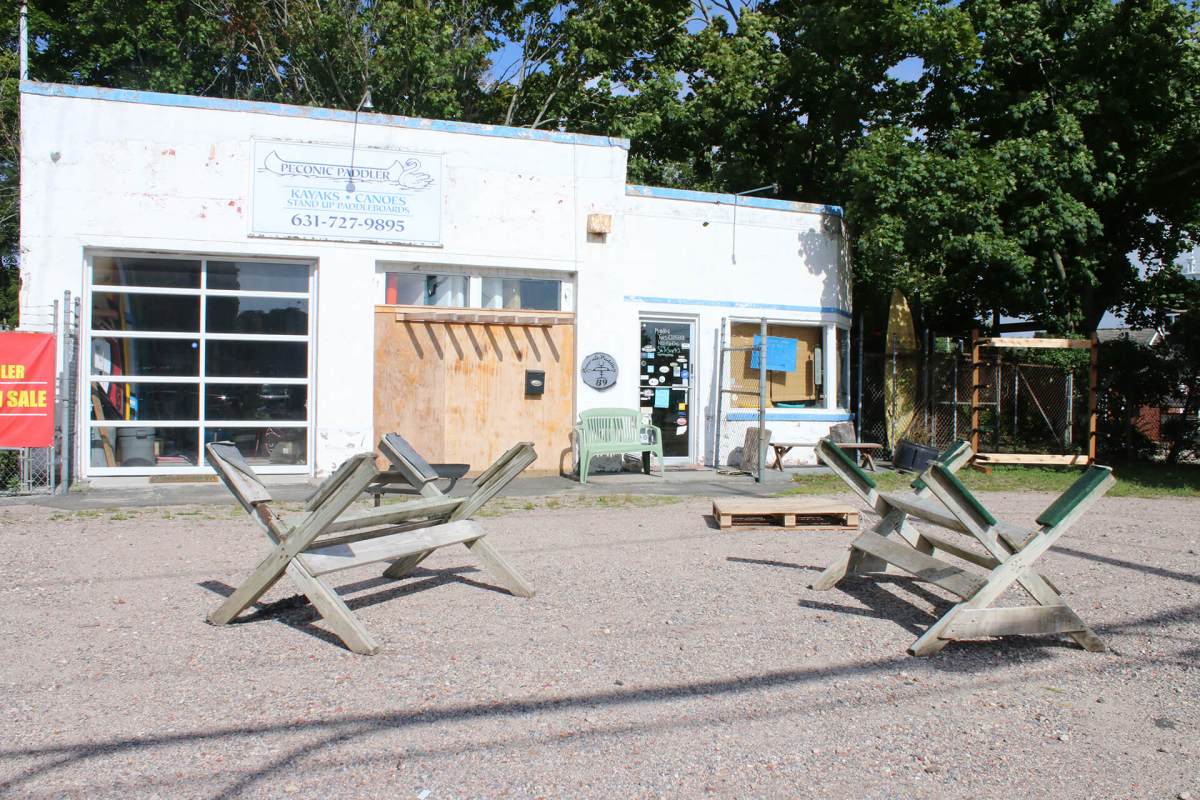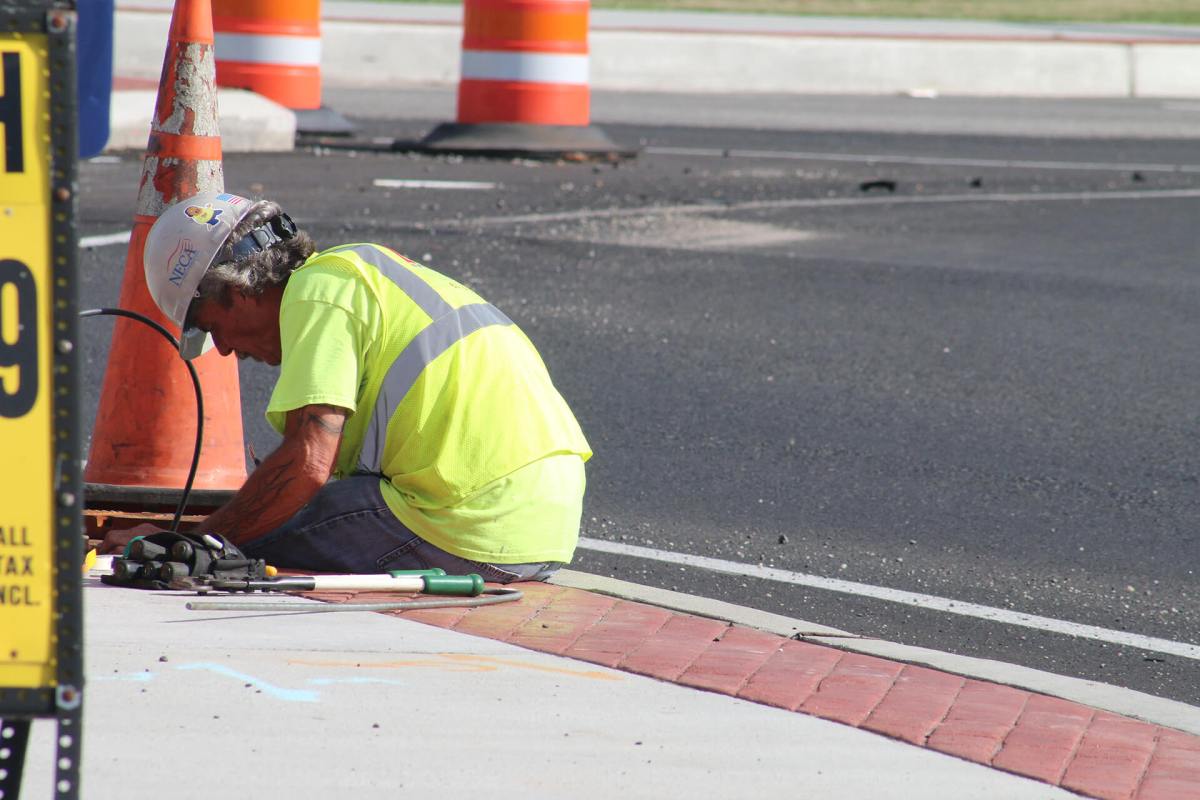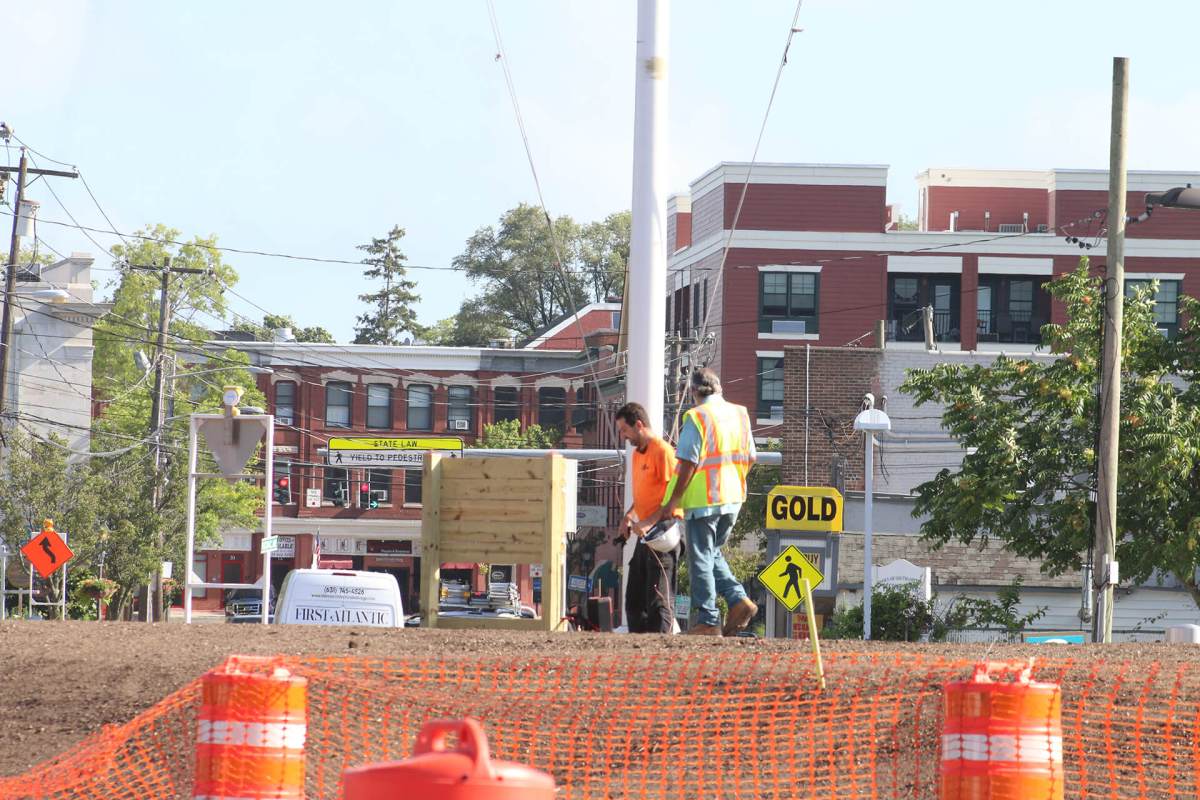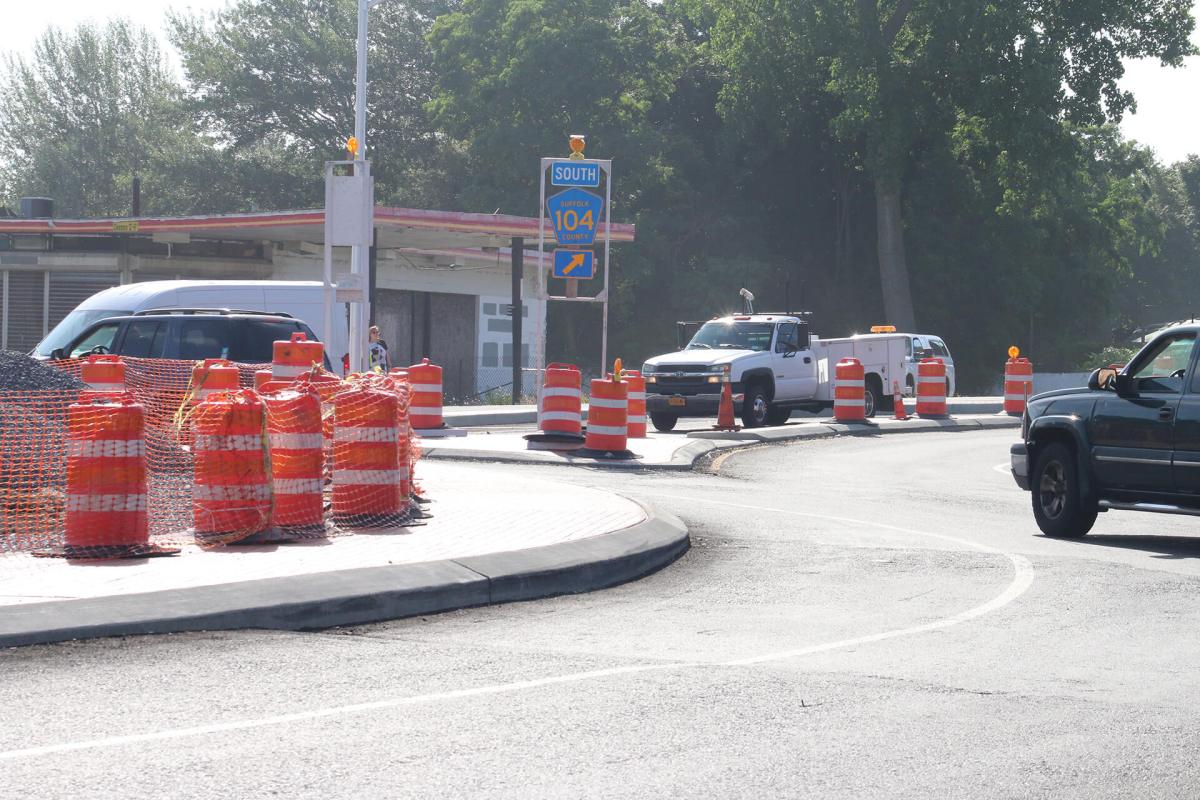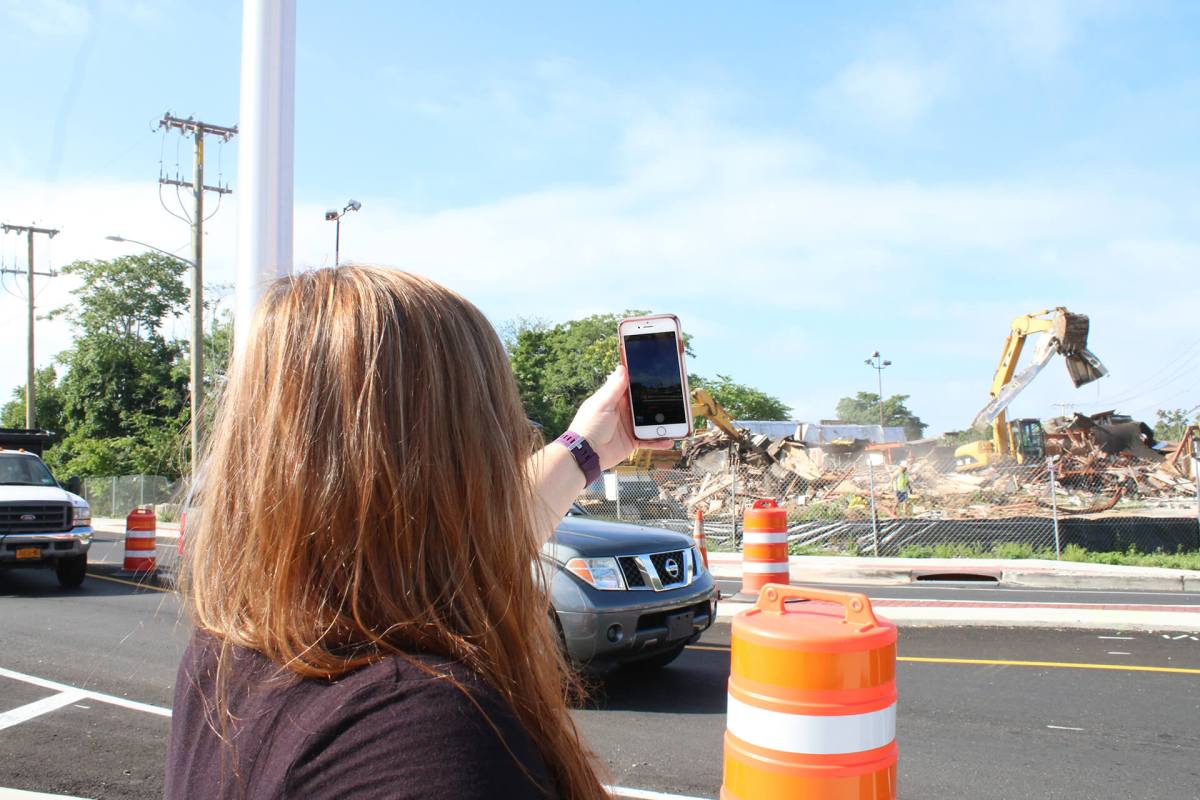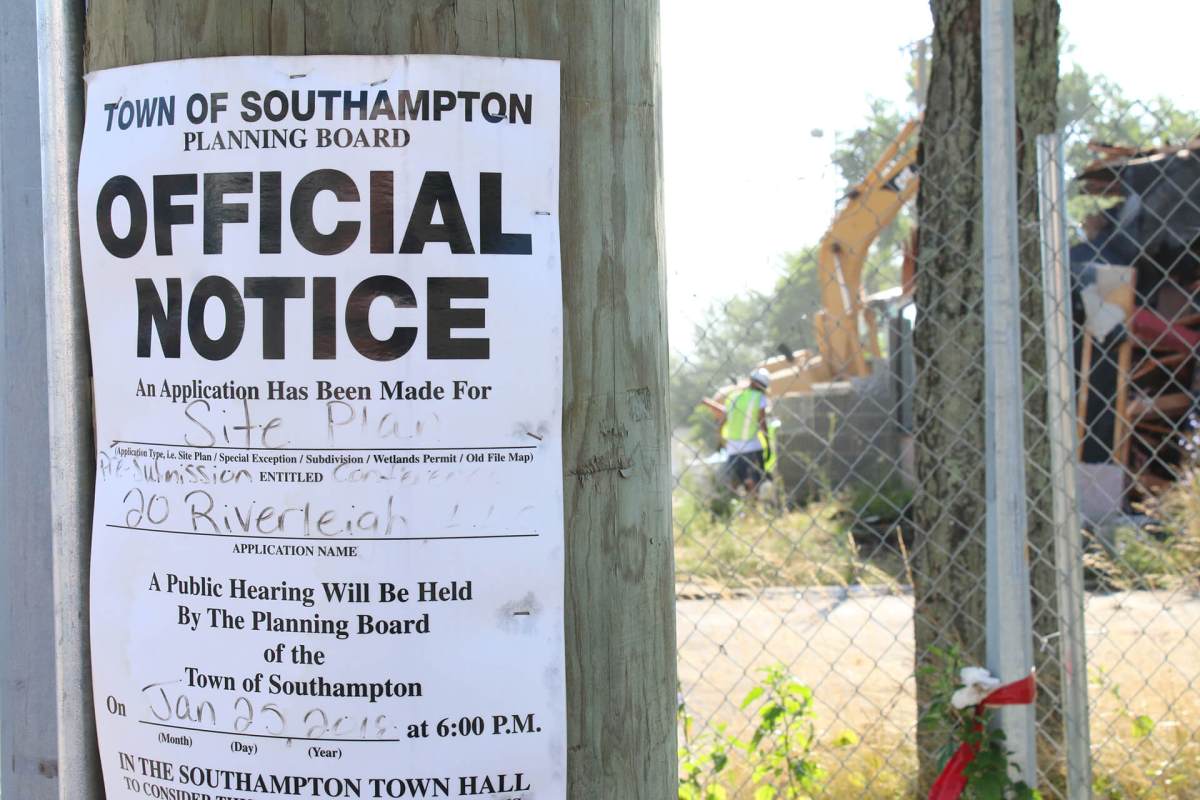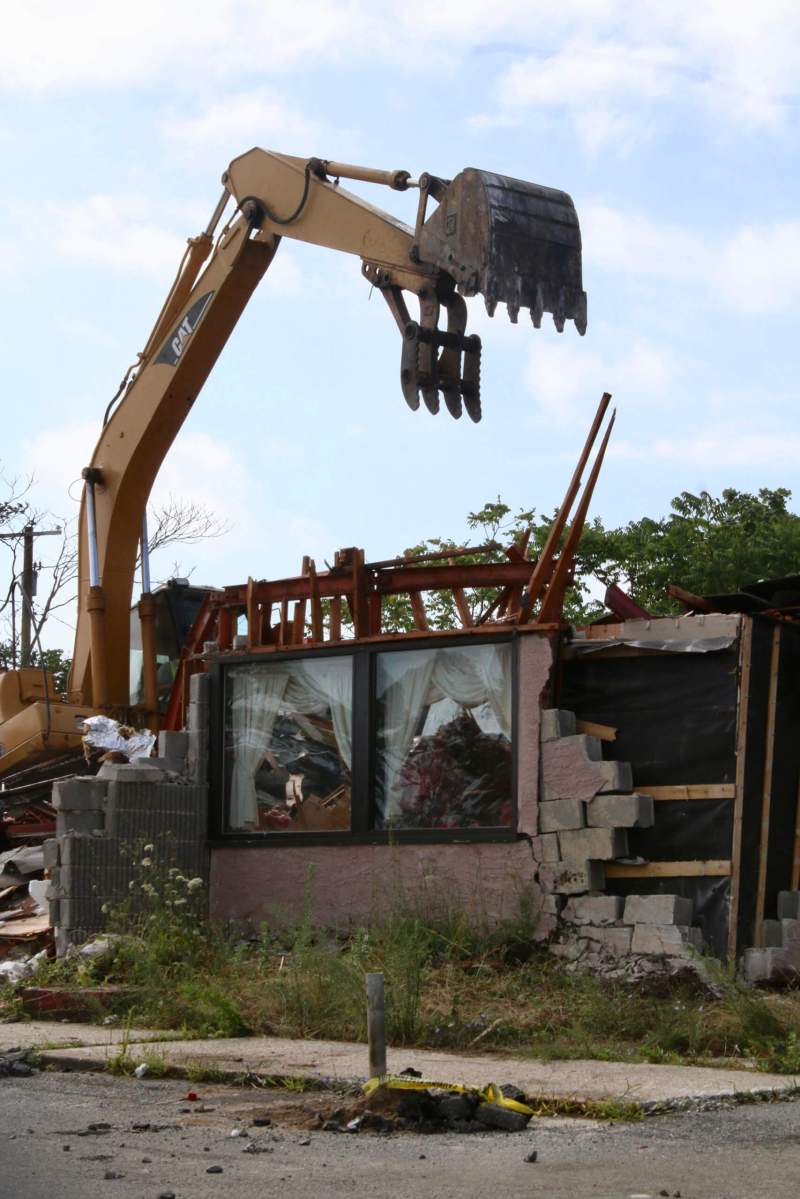When The Dust Settles, A New Day Dawns
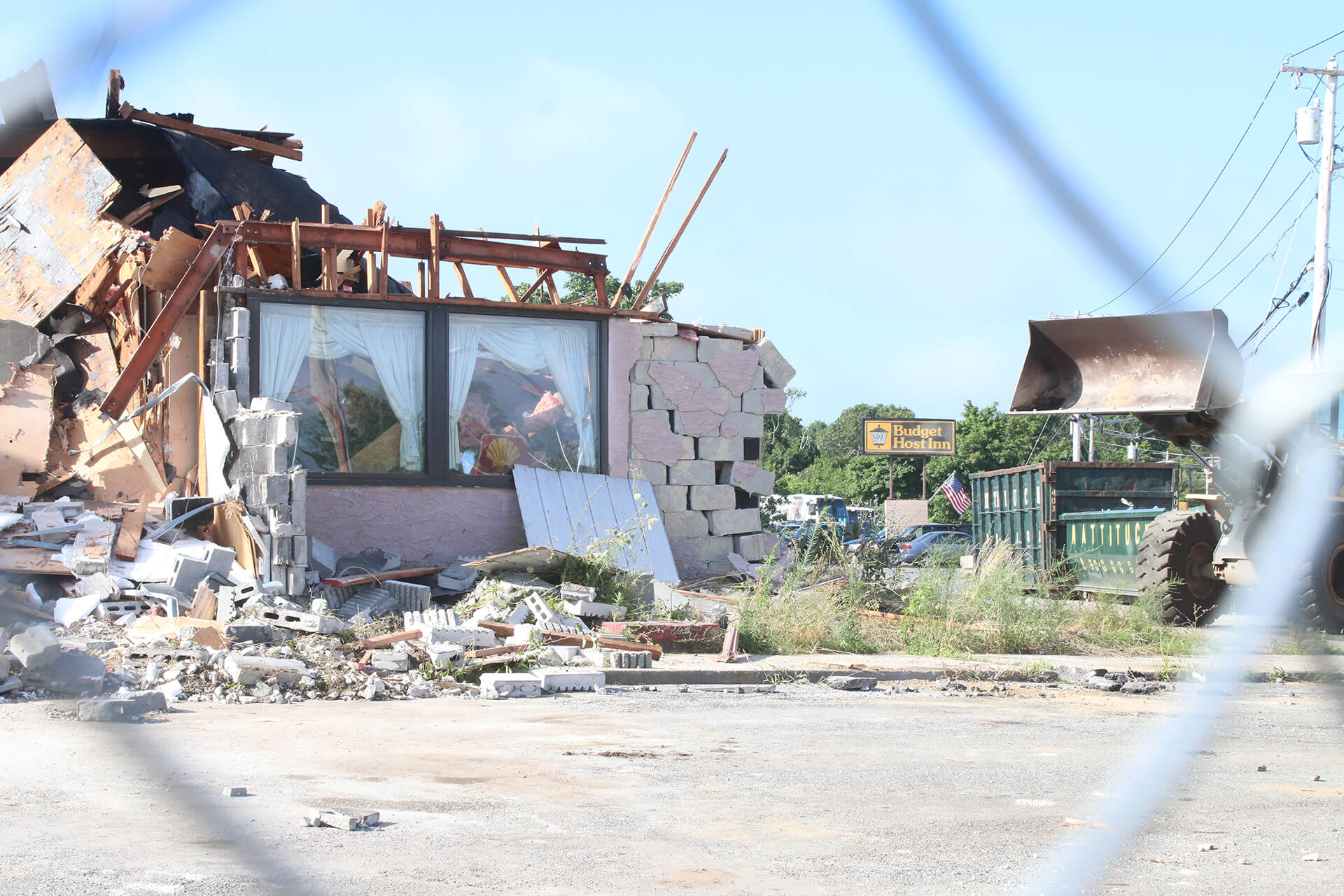
Angela Huneault stood on the corner of Flanders Road across the street from the traffic circle in Riverside and raised her cellphone on Tuesday morning, July 24, to capture video of the demolition of the former Riverboat Diner, so that she could record the moment for posterity on her Facebook page. Workers bulldozed the front of the one-story structure, sending debris and insulation foam flying overhead, creating a cloud of dust as she filmed. Surprisingly, the building’s most vulnerable area, its signature bay windows still adorned with cream-colored drapes, remained in place until almost the end.
Huneault, a resident of Flanders who has lived in the area for 40 years, had eaten in the restaurant through all of its incarnations, starting when it was a Howard Johnson’s and ending with the Italian restaurant it morphed into before closing about 14 years ago. For her, the demolition is the start of something new for the hamlet of Riverside.
“To see a vacant building that wasn’t doing anything, to see it come down to get what we are going to get, just brings beauty to the area and gives us hope for what the future has for us,” said Huneault. She is a member of Riverside Rediscover, a group of residents who are working with public officials and builders to redevelop and bring business to the hamlet. Other members showed up for the demolition too, some peering from behind the steering wheels of their cars as if they were at a drive-in movie, to watch the eyesore, a nuisance that had attracted drug dealers and prostitutes to its parking lot, hit the ground in pieces.
It took about three hours for the building to come down, but Huneault and others hope years of neglect came down along with it.
When the dust settles, the debris will be cleared away, and the former restaurant is slated to be transformed by a private developer into medical offices, which will be built close to the road. All of the parking will be behind the building, so the cars will not be seen as motorists drive around the traffic circle.
Starting to Percolate
William Shaw, president of Riverside Revitalization Community Corporation, said he was happy to see the diner come down, but he would like to see more done in the hamlet such as cleaning up the blighted properties along Flanders Road. “Anything is an improvement,” he said.
Southampton Town has received about $500,000 to reimburse the developer for the cost of the demolition through a program called Restore New York, said Deputy Supervisor Frank Zappone. Zappone, who has been the town’s point person on the revitalization efforts, said the demolition was a big step forward.
“That building has been sitting there for about 15 years,” he said, adding that that the traffic circle itself is in the process of being revamped. It has been reconfigured to improve traffic flow and so it can be landscaped with flowers and bushes, and include a flagpole. “These are things that are really starting to percolate,” he added.
Zappone said the efforts began with the town’s adoption of the Riverside Redevelopment Action Plan, or RRAP — a master plan for the redevelopment of Riverside in and around the traffic circle, after the Riverside Economic Development Committee was established to help the town set goals. “It’s been moving along rather well for the past five of six years, which is a long time but planning is a long-term process. And, now, we have reached the point where a number of issues are starting to coalesce and we are getting closer to putting some shovels in the ground,” he said.
Riverside has been long considered the forgotten child of Southampton Town. Many don’t even know it is part of the swanky town, which boasts some of the most expensive zip codes in the United States and instead believe it is part of Riverhead Town. Riverside actually plays an important role in Suffolk County, as it is home of the county center, which features a legislative building, health and human services offices, the Arthur M. Cromarty Criminal Court Complex, and the Suffolk County Correctional Facility.
Over the years, the hamlet’s residents have struggled for recognition and their own identity, so far away from the town’s seat in Southampton Village. Residents incorporated into a village hoping to gain more localized autonomy in an effort to rid the area of quality-of-life issues and increase their chances at tax dollars for better infrastructure. But the effort failed, and the small government was dissolved back in the 1990s. It is only within the last year that residents won a long battle for their own zip code — separate from that of Riverhead — with the help of Congressman Lee Zeldin.
Many say the hamlet has been held back by a lack of economic development, but that appears to have changed. Some of the projects the Southampton Town Board has coming down the pike include the redevelopment of Ludlam Avenue Park to make it more accessible to the community, and there is the possibility of a partnership with the Children’s Museum of the East End in Bridgehampton to use the facility to expand its programs for the western portion of the town. “We love that idea because Riverside is a very family-centric community and a lot of those children do not have access to resources like the CMEE program,” said Zappone.
Services and Beautification
Southampton also awarded a contract to a local landscape architect to design a park facility near McDonald’s on Route 24 for public access to the Peconic River on the Riverside side. The long-term intent is to develop a boardwalk from Peconic Avenue all the way down to Route 105. The town has grant money for the design of the project, and it is seeking another $500,000 to subsidize the actual construction work, according to Zappone. “That’s a big step forward as well,” he added.
Across from the planned medical offices, on the northwest corner opposite the traffic circle, private developers also have plans to raze the former Peconic Paddler, a kayak, canoe, and paddle board rental business, to make way for a boutique hotel overlooking the river, and there are plans to work with the Town of Riverhead to temporarily access its sewer system at EPCAl, where other entities including businesses in downtown Riverhead and the county center are already tied in. The town has plans to construct a sewage treatment plant of its own on two parcels of land at Enterprise Park nearby, and once that is complete, which is expected by 2020, the hotel could be tied into it. Homes would also be able to tie into the sewer system, in effect reducing the load of nitrates flowing into the water table and improving the health of the Peconic River.
Other projects already completed include the remodeling of the David W. Crohan Community Center on Flanders Road. There are plans to move the town’s youth services to the building this month. “One of the nice things about that is that they offer an afterschool program, and that’s a community of working parents, so having that resource in the community will be a real asset to families with young kids who need a place to be after school,” he said. “This is a real plus for that community.”
Zappone said the medical offices will not only improve the aesthetics of the hamlet, but it will make it easier for residents to access healthcare right on their doorstep, without having to go across town on a bus to Peconic Bay Medical Center’s various facilities.
“It is really more than a beautification of the community, what we are doing is putting services and functionality into the community,” he said.
For Therese Holtgrewe, who has lived in Flanders since 1977, the diner demolition is a symbolic start. “To see this is like, ‘Wow, it is getting done,’” said Holtgrewe, as she watched a pair of payloaders separate debris for carters to the side from her car. “I’m excited. Most people are very excited.”
peggy@indyeastend.com
